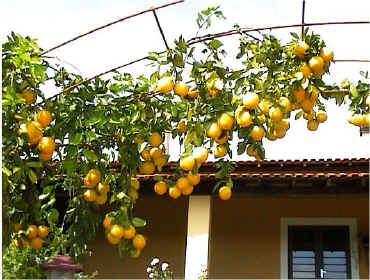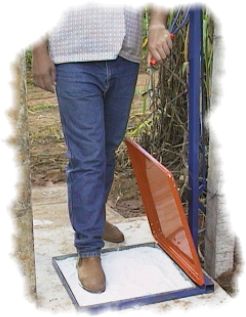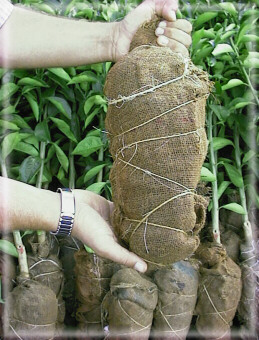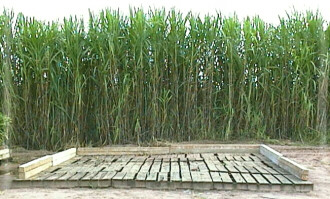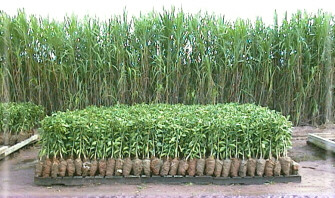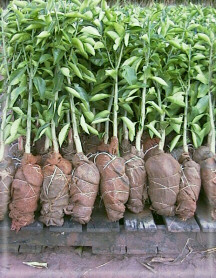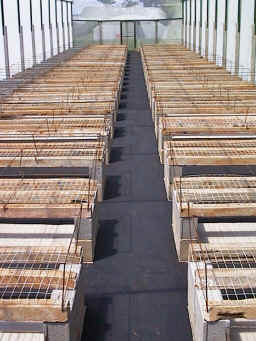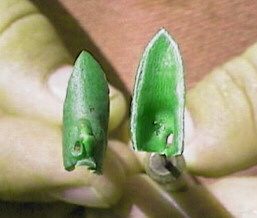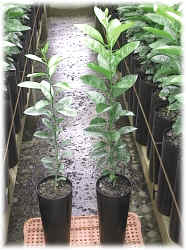|
New Young
Tree Shipping Sleeves. Corrugated cardboard paper sheets held with rubber bands were developed into
shipping sleeves for citrus nursery trees produced in reusable rigid containers. The
sleeves allow for shipping of the plants without the containers, avoiding their
unnecessary handling in the field and return after planting of the trees. Their cost
is approximately US $ 0.04 a piece. The trees ready for shipping are removed from
their original container and placed into the cardboard tubes previously mounted with
the aid of a rubber band. The shipping sleeves last for at least 30 days with regular
irrigation. In addition, the sleeves can be used as tree wraps after planting,
reducing trunk sprouting and damage by leaf-cutting ants, and facilitating herbicide
application. The use of rigid containers instead of plastic bags in the
production of citrus nursery trees eliminates the need for pruning of the root system
before planting. The containers have internal ridges and open bottom which prevent
root curling and tap root bending. Trees produced in plastic bags on the other hand
require careful pruning of curled tap roots as well as pioneer lateral roots in
a cumbersome operation before planting, with increased risks of disease
infection. |
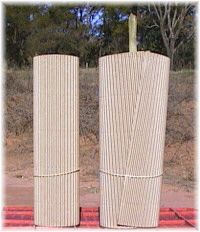 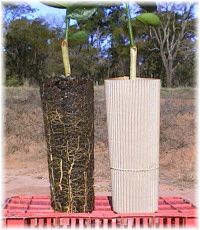 |
